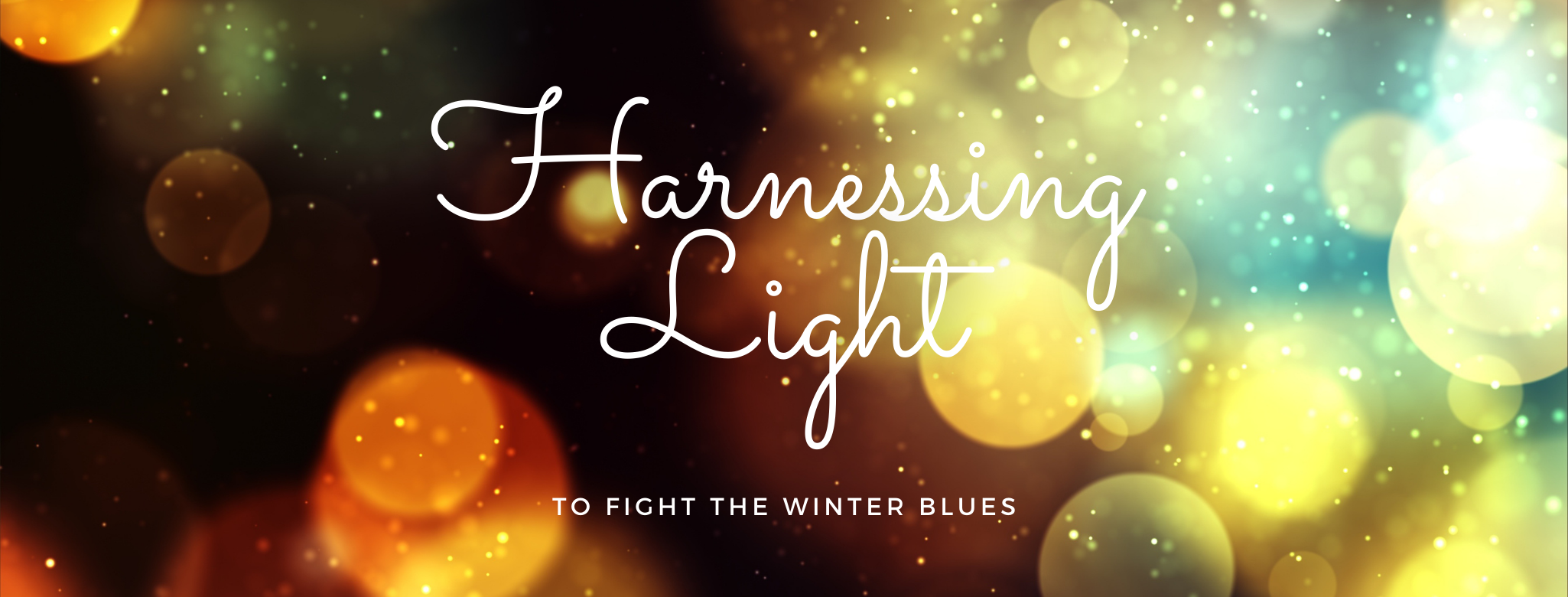|
As the days get darker, colder, and shorter, it is a common phenomenon to experience the winter blues, or its more severe form, Seasonal Affective Disorder (SAD). What exactly does it mean to feel the winter blues or experience SAD? Symptoms of the winter blues can include the following:
 Thankfully, there is a tool to use at home to help stave off or manage the effects of the winter blues or SAD: full-spectrum light therapy. This treatment has been found to be highly effective and with minimal side effects, and it is affordable and easy to use. You can purchase a full-spectrum light box for personal use online for under $30-$100, depending on the model and technological features. The light is most effective at a level of 10,000 lux bright-white fluorescence (with harmful UV rays filtered out), which is significantly brighter than typical lighting. Light exposure should take place first thing in the morning, within an hour of waking up, and for 20-60 minutes per day during the months of the year when daylight is diminished. The light should be close to the face (16-24 inches away), but the user need not stare directly into it for the effect. Light therapy should be completed every day, even on weekends, and at a consistent time for optimal effects. It often can take some time of regular use to feel the effects of it, so it requires a consistent routine. Light therapy can become a foundation for a morning self-care practice of taking some time for yourself in the mornings before getting started with your day. You can have it by you as you have breakfast, check the news, knit, catch up on emails, or however else you like to start your day - just be sure to use it within an hour of waking up to not interrupt your sleep schedule. I am not affiliated with any brands or marketing, but I can personally attest to Verilux for quality light therapy products. Light therapy should be used with caution with certain medications or mental health diagnoses - always check with your medical providers and read manufacturer guidelines before starting any type of treatment. Some people may benefit more fully by using light therapy in conjunction with other treatments for SAD or depression, so it is important to explore all options for the care you need. To read more about light therapy, check out this overview from the Mayo Clinic. Have you considered, or have you tried light therapy yourself? Share your experience below.
0 Comments
Leave a Reply. |
AuthorDr. Bethany Detwiler is a psychologist practicing in Allentown, PA. She specializes in mood and relationship struggles. She also is an adjunct professor of counseling at Lehigh University. Archives
June 2023
Categories
All
|
